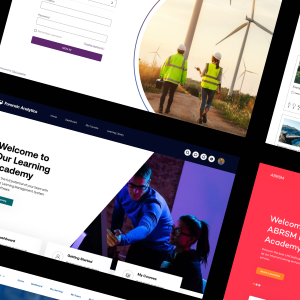Implementing an e-learning programme within your organisation can be a game-changer for employee development and engagement. However, the platform’s success depends not just on its content or features but on how well it is adopted and utilised by your employees. This is where an internal marketing strategy becomes essential.
Here are some key strategies for effectively promoting your e-learning platform internally.
Communicate the Value
Before rolling out your e-learning platform, communicate its benefits in advance. Show employees how the platform can impact their professional growth, make their work more efficient, or add to their skills repertoire. Tailor your message for different teams, illustrating how each can benefit from the platform’s resources. Use emails, posters, or even short videos to convey the platform’s value in an engaging way.
Example Tactic: Create a series of email newsletters spotlighting different courses and their real-world applications. Add testimonials from pilot users who have benefited from early access.
Host Engaging Launch Events
Create excitement around your platform launch with an internal event. This could be a virtual demo session or a live Q&A with subject matter experts who developed the content. Use these opportunities to give employees a sneak peek into the platform’s user-friendly design and most valuable courses.
Example Tactic: Offer incentives for attending the launch like, a free lunch, or exclusive early access to new content.
Leverage Leadership Support
Having leaders within the organisation endorse the platform adds credibility and encourages adoption. Managers and team leads can emphasise the importance of continuous learning and lead by example by participating in courses themselves. Their advocacy can make a significant impact.
Example Tactic: Arrange for department heads to mention the platform in team meetings and share how it’s helping them or their teams achieve strategic goals.
Launch a Gamification Program
Incorporate gamification elements such as badges, points, and leaderboards to make learning exciting and competitive. Recognising employees who actively engage with the e-learning content fosters a culture of learning and increases participation.
Example Tactic: Publicly recognise teams or individuals who engage regularly with your content. This could be done via a monthly “highlights” campaign or challenge where engagement with the platform is incentivised with rewards and prizes.
Create a Community of Learning Champions
Appoint a group of enthusiastic employees as “Learning Champions” who can advocate for the platform and assist their colleagues in getting started. Champions can answer questions, share success stories, and provide feedback to continuously improve the platform.
Example Tactic: Recognise Learning Champions publicly, perhaps with a feature in a company newsletter or by celebrating their contributions in a company-wide meeting.
Integrate Learning Into Daily Workflows
One way to drive adoption is to make the platform a seamless part of everyday work. This could involve setting aside “learning hours” or integrating learning reminders into communication tools like Slack or Microsoft Teams. The goal is to make learning opportunities accessible without interrupting the workday.
Example Tactic: Schedule regular, short “learning sprints” during team meetings, where employees can complete a brief training module together and discuss their takeaways.
Monitor and Share Engagement Metrics
Track the performance of your e-learning platform using metrics like course completions, active users, and feedback ratings. Share these results with the wider organisation to highlight success stories and encourage more participation. Metrics also help you understand areas that may require more promotion or content adjustments.
Example Tactic: Create a monthly e-learning dashboard shared in internal communication channels, showing the team or department with the highest engagement.
Gather and act on feedback
Regularly seek feedback from employees to understand what’s working and what needs improvement. A simple survey or an open forum for suggestions can provide invaluable insights into how you can better tailor your content and marketing efforts.
Example Tactic: Implement a “You Said, We Did” initiative, where you visibly act on feedback to demonstrate that employee input drives platform improvements.
Promoting your e-learning platform internally requires more than just sending out a launch email and hoping for the best. By strategically marketing to your employees, you can foster a culture of continuous learning and maximise the platform’s impact.
Remember, success lies in ongoing engagement and responsiveness to employee needs. Make your e-learning journey a collaborative and celebrated part of your organisation’s growth story.
Through Titus Marketing Support, we specialise in helping organisations drive internal e-learning engagement with tailored marketing strategies.
Want to find out more? Contact us today!
Contact us today to find out more







